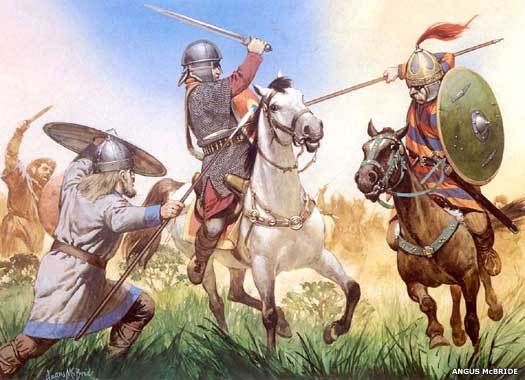
Lombard invaders
Veneto, ItalyThe last and most enduring immigration into the north of the Italian peninsula, that of the Lombards in 568, was the most devastating for the north-eastern region, Venetia (modern Veneto and Friuli). It also confined the Italian territories of the Eastern Roman Empire to part of central Italy and the coastal lagoons of Venetia, known as the Exarchate of Ravenna. Around this time, Cassiodorus mentions the incolae lacunae ("lagoon dwellers"), their fishing and their saltworks and how they strengthened the islands with embankments. The former Opitergium region had finally begun to recover from the various invasions when it was destroyed again, this time for good, by the Lombards led by Grimoald in 667.
As the power of the Byzantine Empire dwindled in northern Italy in the late 7th century, the lagoon communities came together for mutual defence against the Lombards, as the Duchy of Venetia. The Duchy included the patriarchates of Aquileia and Grado, in modern Friuli, by the Lagoon of Grado and Carole, east of that of Venice. Ravenna and the duchy were connected only by sea routes, and with the duchy's isolated position came increasing autonomy. The tribuni maiores formed the earliest central standing governing committee of the islands in the lagoon - traditionally dated to c. 568.
Ask Herodotus
HistoryMaps Shop

Heroes of the American Revolution Painting
Explore the rich history of the American Revolution through this captivating painting of the Continental Army. Perfect for history enthusiasts and art collectors, this piece brings to life the bravery and struggles of early American soldiers.








